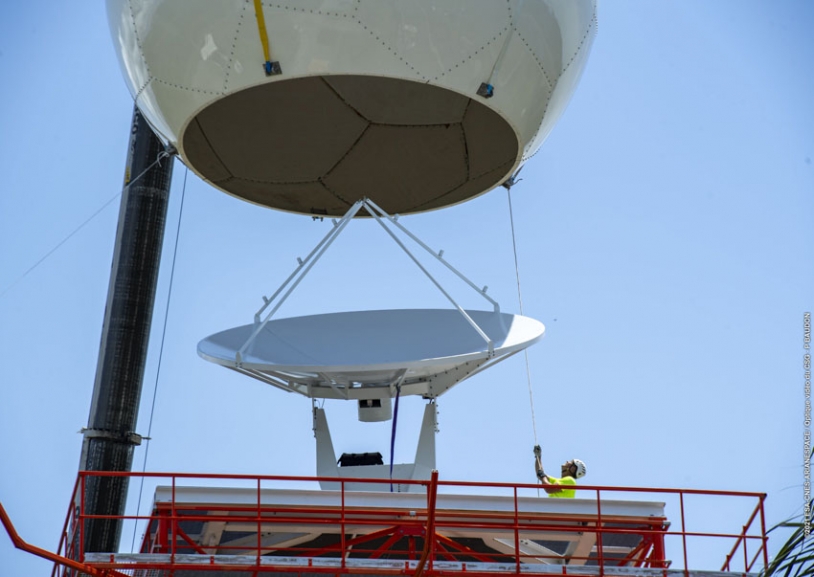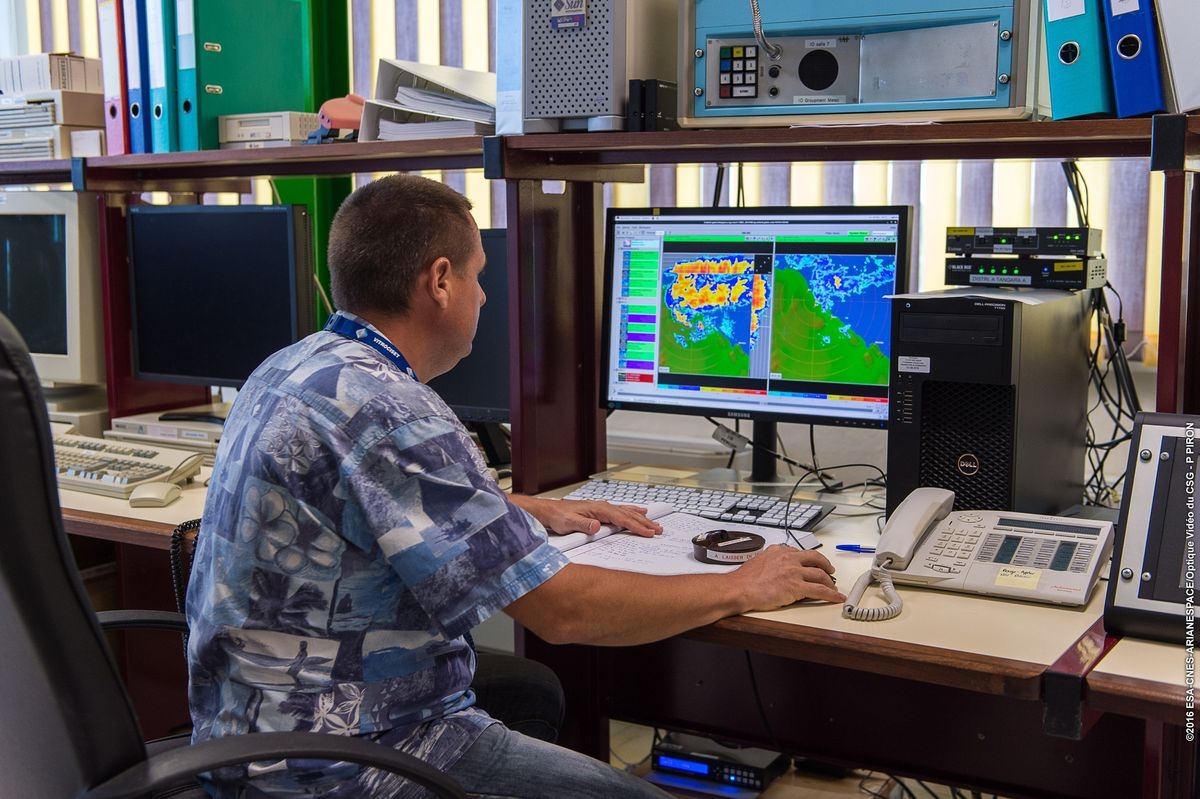Weather station
Located 8 km from the Technical Centre, the weather station is entirely dedicated to GSC activities. It is indispensable for both daily and preparatory activities, and it forecasts rainfall, wind, lightning and cloud masses.
The weather station is one of the first facilities at the GSC: it has been in operation since 1968, the year of the maiden launch from the GSC, and has played a major scientific role including experiments carried out on board weather balloons, aircraft and then sounding rockets.
Weather data essential for safety at the GSC
The data provided by the GSC weather station plays an important role in launch preparation operations on a daily basis. Poor weather conditions could make certain activities risky, such as satellite transport, the roll-out of launchers to the launch zone, operations involving hazardous materials or simply working at height. So the weather station teams are consulted before each of these operations: if the analyses carried out show that there is a risk, the operation is postponed.
During launches, the role of the weather service is even more critical: from D-2 before lift-off, the station provides the safety teams with “weather briefings”, or weather forecasts for the targeted lift-off time. On D-0, several weather briefings are again provided, up to 10 minutes before launch. If the safety criteria are not met, the station alerts the control centre: the launch sequence is suspended until weather conditions permit, or postponed to a later day.
Lightning and upper winds: the two main criteria
During a launch, two meteorological parameters may necessitate stopping the sequence: the risk of lightning and strong upper winds.
Rocket launches and balloon releases
In order to carry out these measurements, the operators of the GSC weather station carry out radiosonde observations: releasing weather balloons to supplement the observations measured on the ground. These balloons rise to an altitude of up to 30 km, carrying a probe that measures parameters such as atmospheric pressure, temperature and humidity.
Lightning is a serious danger to launchers, which contain large quantities of flammable and explosive materials for their propulsion. Thus, the launch cannot take place if there are thunderstorm formations in the vicinity of the launch zone.
Winds have no influence on the trajectory of the launchers. However, strong upper winds can be a reason for postponing a launch. This is a preventive measure due to the combustion products used in the launch, which in case of strong upper winds could be directed towards inhabited areas before being completely dispersed in the air. Thus, if the direction and speed of the upper winds is likely to result in combustion particles falling outside the safe areas, the launch is postponed.

Weather radar, the cornerstone of a launch
The radar units are called Rodin, Romuald and Romeo. These are the weather radar at the GSC. Romeo, a brand new piece of equipment, was installed under its dome in 2021 (photo).
They work in much the same way as their cousins, tracking radar: a parabolic antenna generates electromagnetic pulses that bounce off the water droplets (the targets) and whose radiation is reflected back to the antenna. The computer does the rest, and after viewing the data, the operator transmits it until the last minute during a launch, authorising the lift-off or not.
Four main types of activities of the weather station
- Forecasting: processing of satellite images, use of digital models
- Detection: electrostatic field measurement, radar image processing, lightning detection
- Measurements: wind, air pressure, humidity, temperature, but also radiosonde and human observation of the sky.
- Data processing, transmission and archiving.

